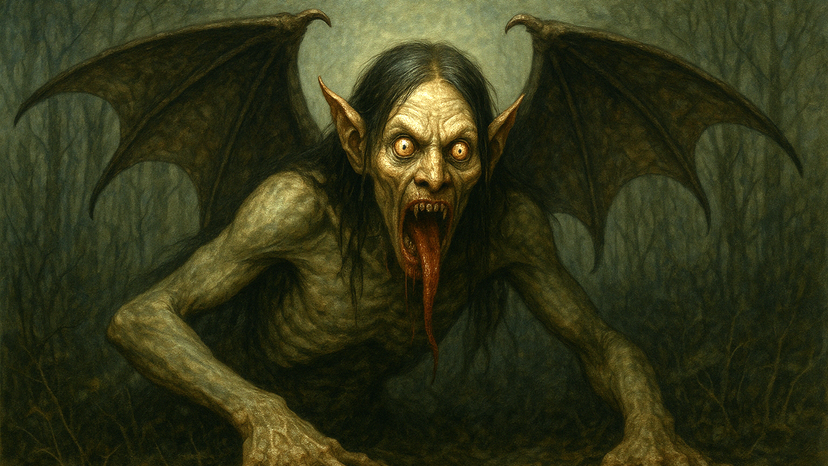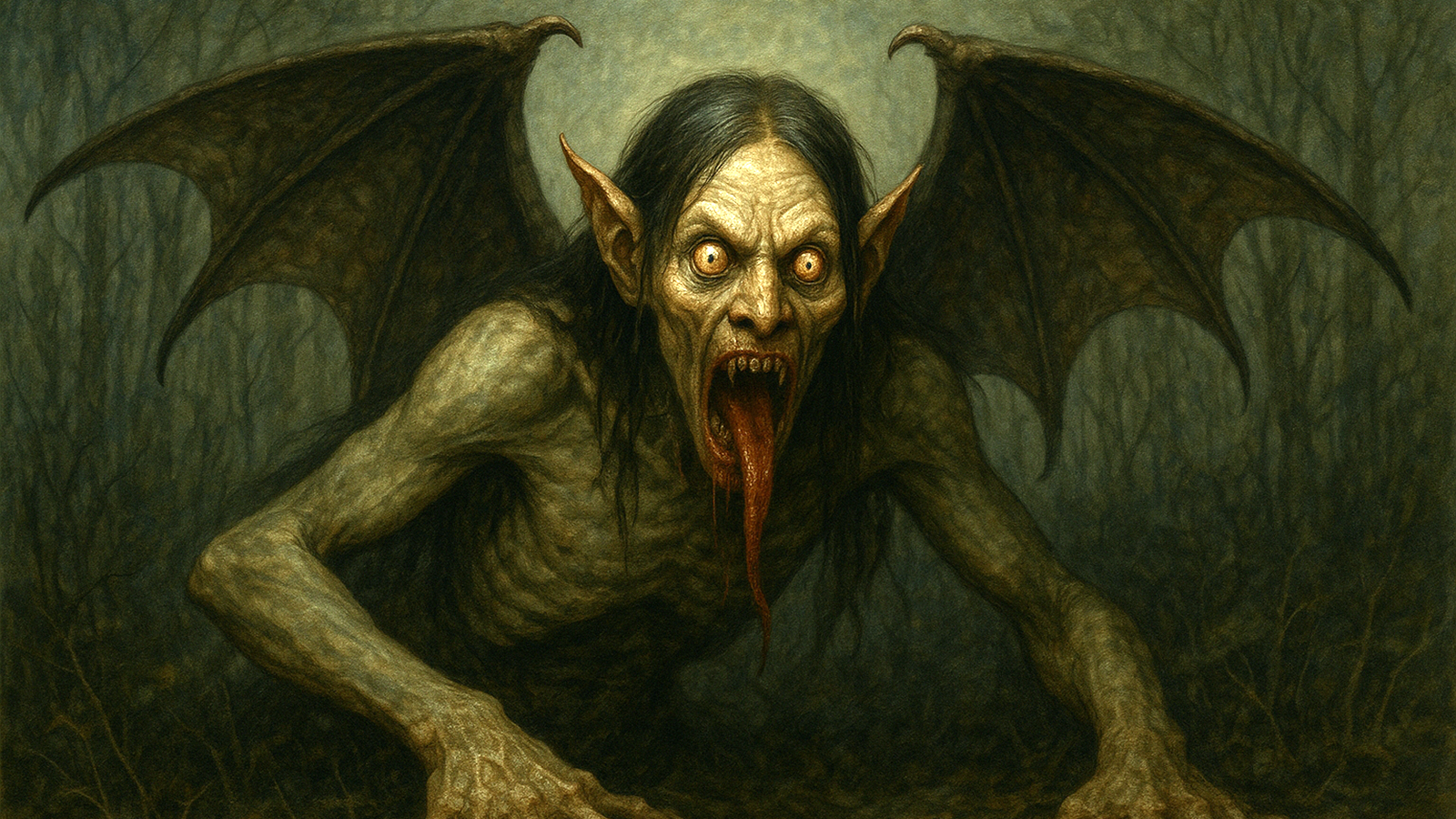
When it comes to Filipino folklore, few figures stir the imagination — or the fear factor — quite like the aswang. This mythical creature isn’t just one thing; it’s a category of terrifying, shape-shifting beings with a taste for human flesh and a knack for haunting bedtime stories across the Philippines.
These creatures are said to roam the night in various forms, from viscera suckers with proboscis-like tongues to were-dogs and winged horrors called wak waks. While stories differ from region to region, many aswang are believed to prey on pregnant women, unborn fetuses, small children and even murdered men.
The horror doesn’t stop there. Some variations include self-segmenting viscera suckers that leave their lower bodies behind while the top half flies into the night.
What Is an Aswang?
The aswang is a class of supernatural creatures deeply embedded in Philippine folklore. Unlike vampires or werewolves from Western lore, the aswang is a cultural mash-up of witches, ghouls, shapeshifters and demons from across Southeast Asia and other global influences.
Spanish colonists noted these terrifying creatures as early as the 16th century, with missionaries like Juan de Plasencia writing about “osuangs” that stalked the archipelago’s rural villages. Some aswang were said to appear fully human by day, only revealing their terrifying nature under cover of night.
Often described as having bloodshot eyes and a ghastly appetite, the aswang is believed to use a proboscis-like tongue to suck the blood of its victims, particularly targeting young and helpless prey. Some tales describe them sneaking into homes to reach a pregnant woman and feast on her unborn child.
That’s some grade-A nightmare fuel.
A Monster of Many Forms
Filipino aswang legends include a terrifying range of variations: the vampire-like aswang that feeds on blood, the manananggal (aka self-segmenting viscera sucker) and ghostly creatures that resemble birds or animals. The wak wak and tik tik are said to make eerie flapping or clicking noises when nearby, though some believe the sound grows fainter the closer the creature gets.
According to aswang stories, these mythological creatures don’t just kill; they torment their prey by stalking them over several nights.
In the Visayas region, especially Capiz, the aswang is so ingrained in culture that some residents have claimed to know individuals afflicted by the curse. Local narratives often include horrifying details about bodies drained of internal organs, trails of blood and babies who disappear without a trace.
Historical and Cultural Origins
The aswang’s origins are rooted in the blending of indigenous beliefs and external influences. Long before Spanish colonists set foot on the islands, ethnic groups across the Philippines shared oral traditions involving supernatural creatures.
Colonists reinforced these beliefs, interpreting the aswang through the lens of sin, devilry and the supernatural. During colonization, Christian missionaries frequently tied aswang legends to women accused of witchcraft.
In many areas, being labeled an aswang meant social exclusion or worse. Colonial documents, such as those by Juan de Plasencia, also referred to a creature called osuang that resembled modern versions of the European vampire, feeding on human victims.
Aswang in Religion, Gender and Morality
Like many supernatural creatures, the aswang often reflects deeper cultural fears and moral teachings. Many legends connect the aswang to women, particularly older or single women, tying the creature to fears about gender roles, sexuality, and social deviance. These stories can be read as cautionary tales about deviating from expected norms.
At the same time, the aswang is sometimes portrayed as a tragic figure — someone who became a monster due to a curse or divine punishment.
The creature’s association with the devil, sin and the supernatural makes it a stand-in for moral and religious lessons passed down through generations of Filipinos.
From Horror to Pop Culture
Today, the aswang remains one of the Philippines’ most enduring and terrifying creatures. Documentaries like the 2020 film “Aswang” have explored how this folklore intersects with real-life horrors, such as extrajudicial killings. The aswang has also shown up in fiction, from indie horror films to GCF Books novels that reimagine these monsters for a new generation.
Platforms like the Aswang Project continue to collect and share these narratives, preserving them for future generations while analyzing their evolution. Even the CIA has leveraged aswang stories in disturbing yet fascinating ways.
Modern Beliefs and Investigations
Folklorists, researchers, and even curious citizens have contributed to an ongoing aswang inquiry — a collective effort to understand how and why these creatures persist in modern belief systems.
Interviews with rural residents often reveal genuine fear and firsthand accounts of sightings. Some claim the creature can appear as a bird, a male stranger or even a trusted neighbor.
Despite scientific explanations and urban skepticism, belief in the aswang continues. People still leave offerings, use garlic and salt as protection and keep babies away from open windows at night. Stories from victims or witnesses are passed down as oral narratives, weaving into the fabric of Filipino life.
Why the Aswang Endures
The aswang persists not only because it makes a good horror story but because it speaks to universal human fears: loss, death, betrayal and the unknown. These creatures symbolize the danger that can exist in the everyday and the thin line between human and monster.
In that way, the aswang continues to be both a product of and a commentary on Filipino beliefs, folklore and identity.
Whether it’s the creature’s eerie laugh, its fixation on a baby’s blood or its tendency to strike when no one is watching, the aswang’s story refuses to die. It evolves, like all living folklore, taking new shapes to reflect the times.
We created this article in conjunction with AI technology, then made sure it was fact-checked and edited by a HowStuffWorks editor.
























